You are using an out of date browser. It may not display this or other websites correctly.
You should upgrade or use an alternative browser.
You should upgrade or use an alternative browser.
Mahakhitan: A Chinese Buddhist Civilization in India
- Thread starter Green Painting
- Start date
-
- Tags
- architecture india khitans pictures
Threadmarks
View all 51 threadmarks
Reader mode
Reader mode
Recent threadmarks
Chapter 27 Mahakhitan Kaleidoscope (1): A Brief Introduction to the Empire’s Administrative Branch in 18th Century Chapter 28 Mahakhitan Kaleidoscope (2): Mahakhitan Vexillology, and Brief Introduction to the Country’s Army and Navy Bonus 006: Dimensions of the South Asian Subcontinent, Among Other Things Chapter 29 Stories of Mahakhitan Porcelain Art (Part One) Bonus 008: Preview of the Mahakhitan State mod For Victoria II. Original Historical Material: The Mahakhitan Chronicle (1632-1760) Chapter 30 Stories of Mahakhitan Porcelain Art (Part Two) Chapter 040, An Illustrated Guide to South City Wards.Let's see: Spinach paneer, curry sauces, a massaman/vegetarian curry, a lentil dosa/stew thing, a sort of proto-chicken tikka thing, mutton meatballs as stated, basmati rice based mutton pilaf(common everywhere) or a variant therof, kebab with scallions, various sauces and like, etc, nan, paratha, rotis, etc, a sort of Goan fish curry or soup, and a proto mango lassi and ice cream. This is my best guess.
Sorry about that. Just saw the updates and not the comments for the most part. Plus, the Chapter ten section gave me more of a snippet. But you have addressed it. Sorry on my part.
No problem. I didn't mean to imply anything.
Apparently Kara could not go too deep into religious transitions.
What are the relations between the Liao rulers and their Indian subjects?
What're Liao Dynasty's foreign relations with the rest of Indian kingdoms?
What're Liao Dynasty's foreign relations with the rest of Indian kingdoms?
What are the relations between the Liao rulers and their Indian subjects?
What're Liao Dynasty's foreign relations with the rest of Indian kingdoms?
Maybe you can start by catching up from for example Chapter 3? That's where the earliest mention of the administrative partition is such as:
Besides Fuli and Hanshan Circuit, places that the Liao State Liao given to aristocrats and Liaonized Indian nobles to rule included the Malwa Region (or Monan Circuit, South of the Desert Circuit), Indian Ocean Coast (the Persia Circuit, the setting of which enraged the Seljuk Sultan), and Kangzhou region (Samarkand, lost and recaptured for multiple time during the see-saw battle with the Mongol Yuan). Those regions also held high regards in the Khitan world.)
What’s left were the administrative zones the Emperor set up symbolically, whereas titles of Prince or Duke were given to their original leaders, and the land of a Circuit or a Prefecture was “”granted” to him in a purely ritual gesture in confirmation, thus creating a peripheral region. Those regions held relatively larger autonomy, and tends to keep more native culture. In the matter of religion, they were influenced by Mahayana Buddhism. Their princes intermarried with the Yelu family for generations.
The larger territories of this type included the Shanyang Circuit (山陽道 Yang/South of the Mountain Circuit, Assam)【4】 of the House of Pala, the Puti Circuit (菩提道,Bodhi Circuit, Bihar) of the Yelu family’s collateral branches, the aforementioned Hanshan Circuit or Afghanistan might also belong here. The Bodhi Circuit has the Bodh-gaya and the Nalanda.
Smaller ones included the autonomous prefectures of the Monan Circuit (漠南道, South of the Desert Circuit, Rajputana), prefectures of the Lengjia Circuit (楞伽, or Lanka Circuit), the prefectures of the Annan Circuit (安南道 Pacifed South Circuit, or Orissa), prefectures of the Xihai Circuit (西海 Western Sea Circuit, or Gujrat). The Liao Emperor has been, in the recent years, trying to weaken those prefecture’s autonomy and slowly Liaonize them.
I think there are also some comments from Green Paintings, the original translator, that addressed this in the discussions.
About Indian kingdoms out of Liao's current borders:
Basically you can refer to the map in Chapter 3 and see only Telugu and Chola on the south are independent from Liao.
The coming Chapter 12 will be the final part of the story of Zheng He in OTL. Then there will be three consecutive chapters introducing the central, western and eastern parts of the Mahakhitan administrative units as of 1510 OTL. Chapter 15 will mention the "interactions" with the south. There will be some overall changes compared to the situation in the 15th Century, too.
Record of the Western Regions~ the Off-Track Part Six
Record of the Western Regions~ the Off-Track Part Six
名不副实的摩诃西域记第六期
(Translator's note: This is originally attached to the end of Chapter 11, but the chapters from Grand Theatre series are pretty long so I'm inclined to post these "additional" parts separately.)
The cuisine mentioned in this chapter are all based on what exist in OTL Central Asia, Pakistan and Punjab. When I was designing them, I kept the following in mind:
On the basis of existing recipes, I modify them into non-high-calorie versions. The upper class would not so insistently pursue a large amount of calories, so I will tone down the use of oil, grease and sugar.
Can’t use ingredients from the Americas. How would a mixed diet look like before the arrival of potatoes, peppers and tomatoes? What about the seasoning? Contemporary people in the region can barely live without those three.
Influences from Central Asians and western Han people. Of course it should not be a simplistic transplant from what we have in OTL, due to the specific changes caused by the local selection of ingredients and also lifestyle ITTL.
Defamiliarisation - deliberate omission of names. Some of the original recipes are what I am very familiar with, but the story will be told from those from out of the region, and of course they would not be able to remember all those names of the dishes.
Since I am in the mood recently, I’d actually like to cook one or two of them myself ( ・ิω・ิ)
Originally, I wanted to actually draw the looks of those three little Shanyang Circuit infantas. But working over-time recently has worn me out… it’s a vomit-inducing experience to work on sketches every day, so I was only able to come up with one very roughly-drawn sketch of the luncheon. Here’s a loan receipt to you guys. I will definitely finish the drawing next time.
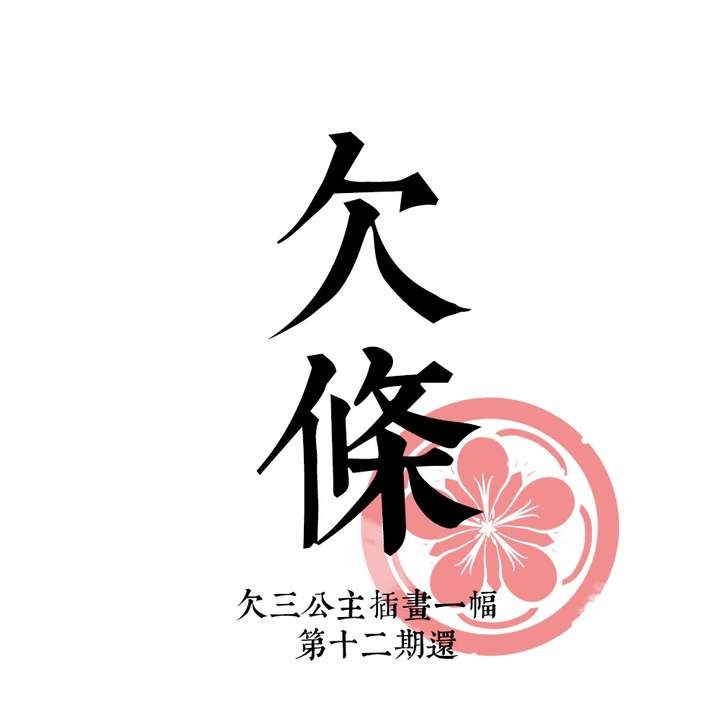
As a matter of fact, the Mahakhitan-style clothing for the girls is ready.
So as a compensation, let me post the illustrative notes I made while doing my research before.
(Can’t give you the three of them, so here’re twelve instead~!)
The Maha Twelve Beauties
No. 1 to No. 4: Liao Dynasty
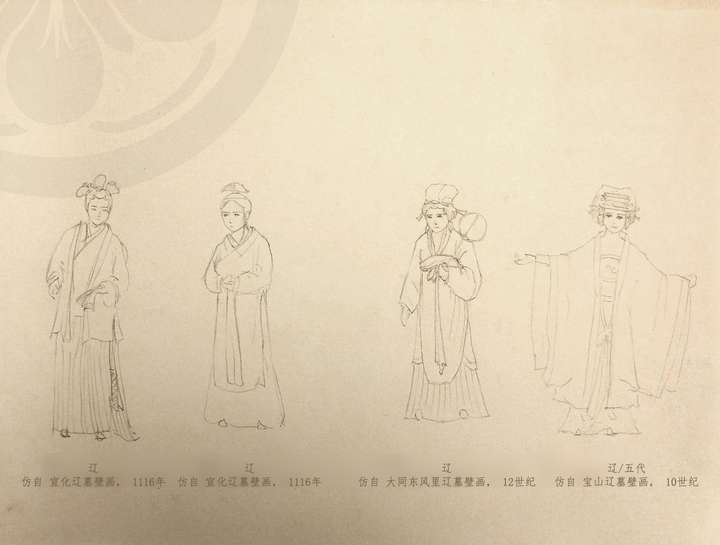
No. 1: Liao – based on tomb fresco from the Era of Xuanhua, 1116.
No. 2: Liao – based on tomb fresco from the Era of Xuanhua, 1116.
No. 3: Liao – based on tomb fresco, Dongfengli (East Wind Neighbourhood), Datong, 12th Century.
No. 4: Liao/Five Dynasties – based on tomb fresco, Baoshan, 10th Century.
No. 5 to No. 8: Central Asia
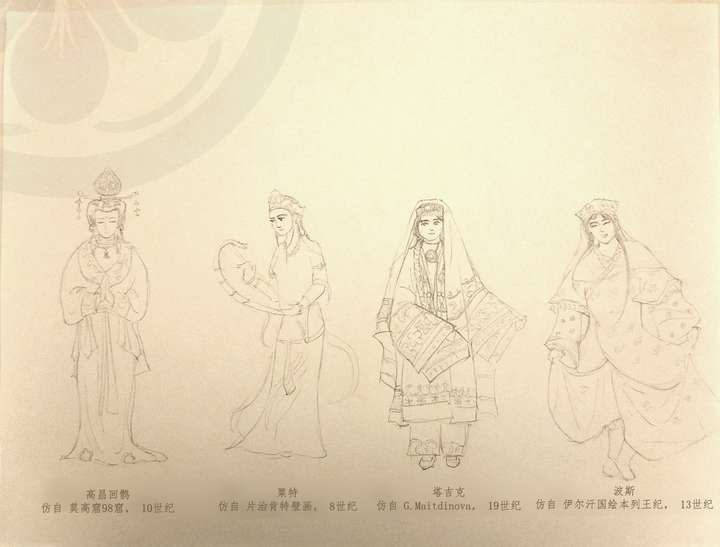
No. 9 to No. 12: South Asian Subcontinent
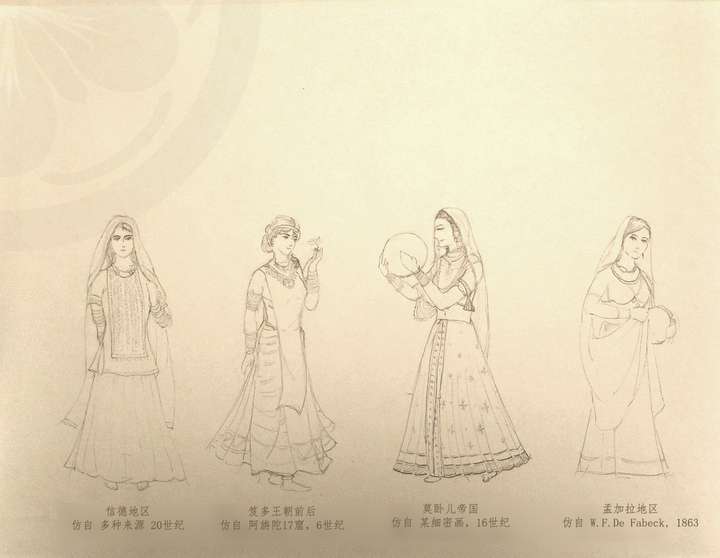
No. 9: Sindh – based on multiple sources, 20th Century.
No. 10: around Gupta Dynasty – based on (fresco from) Cave No. 17, Ajanta Caves, 6th Century.
No. 11: Mughal Empire – from a miniature, 16th Century.
No. 12: Bengal – based on (the work of) W. F. De Fabeck, 1863.
The clothing are basically faithfully based on the original material, but I improvised the poses.
Let me know if you happen to like any specific one of them.
See you nex time~!
名不副实的摩诃西域记第六期
(Translator's note: This is originally attached to the end of Chapter 11, but the chapters from Grand Theatre series are pretty long so I'm inclined to post these "additional" parts separately.)
The cuisine mentioned in this chapter are all based on what exist in OTL Central Asia, Pakistan and Punjab. When I was designing them, I kept the following in mind:
On the basis of existing recipes, I modify them into non-high-calorie versions. The upper class would not so insistently pursue a large amount of calories, so I will tone down the use of oil, grease and sugar.
Can’t use ingredients from the Americas. How would a mixed diet look like before the arrival of potatoes, peppers and tomatoes? What about the seasoning? Contemporary people in the region can barely live without those three.
Influences from Central Asians and western Han people. Of course it should not be a simplistic transplant from what we have in OTL, due to the specific changes caused by the local selection of ingredients and also lifestyle ITTL.
Defamiliarisation - deliberate omission of names. Some of the original recipes are what I am very familiar with, but the story will be told from those from out of the region, and of course they would not be able to remember all those names of the dishes.
Since I am in the mood recently, I’d actually like to cook one or two of them myself ( ・ิω・ิ)
Originally, I wanted to actually draw the looks of those three little Shanyang Circuit infantas. But working over-time recently has worn me out… it’s a vomit-inducing experience to work on sketches every day, so I was only able to come up with one very roughly-drawn sketch of the luncheon. Here’s a loan receipt to you guys. I will definitely finish the drawing next time.

Loan Receipt: in acknowledgement of one drawing of the three princesses owed; to be paid in Chapter 12.
As a matter of fact, the Mahakhitan-style clothing for the girls is ready.
So as a compensation, let me post the illustrative notes I made while doing my research before.
(Can’t give you the three of them, so here’re twelve instead~!)
The Maha Twelve Beauties
No. 1 to No. 4: Liao Dynasty

No. 1: Liao – based on tomb fresco from the Era of Xuanhua, 1116.
No. 2: Liao – based on tomb fresco from the Era of Xuanhua, 1116.
No. 3: Liao – based on tomb fresco, Dongfengli (East Wind Neighbourhood), Datong, 12th Century.
No. 4: Liao/Five Dynasties – based on tomb fresco, Baoshan, 10th Century.
No. 5 to No. 8: Central Asia

No. 5: Gaochang Uyghur – based on (fresco from) Cave No. 98, Maogao Caves, 10th Century.
No. 6: Sogdian – based on fresco from City Site at Pyanjikent, 8th Century.
No. 7: Tajik – based on (the work of) G. Maitdinova, 19th Century.
No. 8: Persian – based on the Ilkhanate picture book version of Shahnameh, 13th Century.
No. 6: Sogdian – based on fresco from City Site at Pyanjikent, 8th Century.
No. 7: Tajik – based on (the work of) G. Maitdinova, 19th Century.
No. 8: Persian – based on the Ilkhanate picture book version of Shahnameh, 13th Century.
No. 9 to No. 12: South Asian Subcontinent

No. 9: Sindh – based on multiple sources, 20th Century.
No. 10: around Gupta Dynasty – based on (fresco from) Cave No. 17, Ajanta Caves, 6th Century.
No. 11: Mughal Empire – from a miniature, 16th Century.
No. 12: Bengal – based on (the work of) W. F. De Fabeck, 1863.
The clothing are basically faithfully based on the original material, but I improvised the poses.
Let me know if you happen to like any specific one of them.
See you nex time~!
Last edited:
I want to say, beautiful drawings you made there. This reflects the colourful life of the TTL's Indian-based Liao Dynasty.
I want to say, beautiful drawings you made there. This reflects the colourful life of the TTL's Indian-based Liao Dynasty.
Haha do you have a drawing that you particularly like (including the ones from previous updates)? The 12 girls in the recent 3 pics are not TTL, but rather OTL-based though.
Hmm, while I don't have a particular favourite at the moment, but if have given one. It will be this:Haha do you have a drawing that you particularly like (including the ones from previous updates)? The 12 girls in the recent 3 pics are not TTL, but rather OTL-based though.
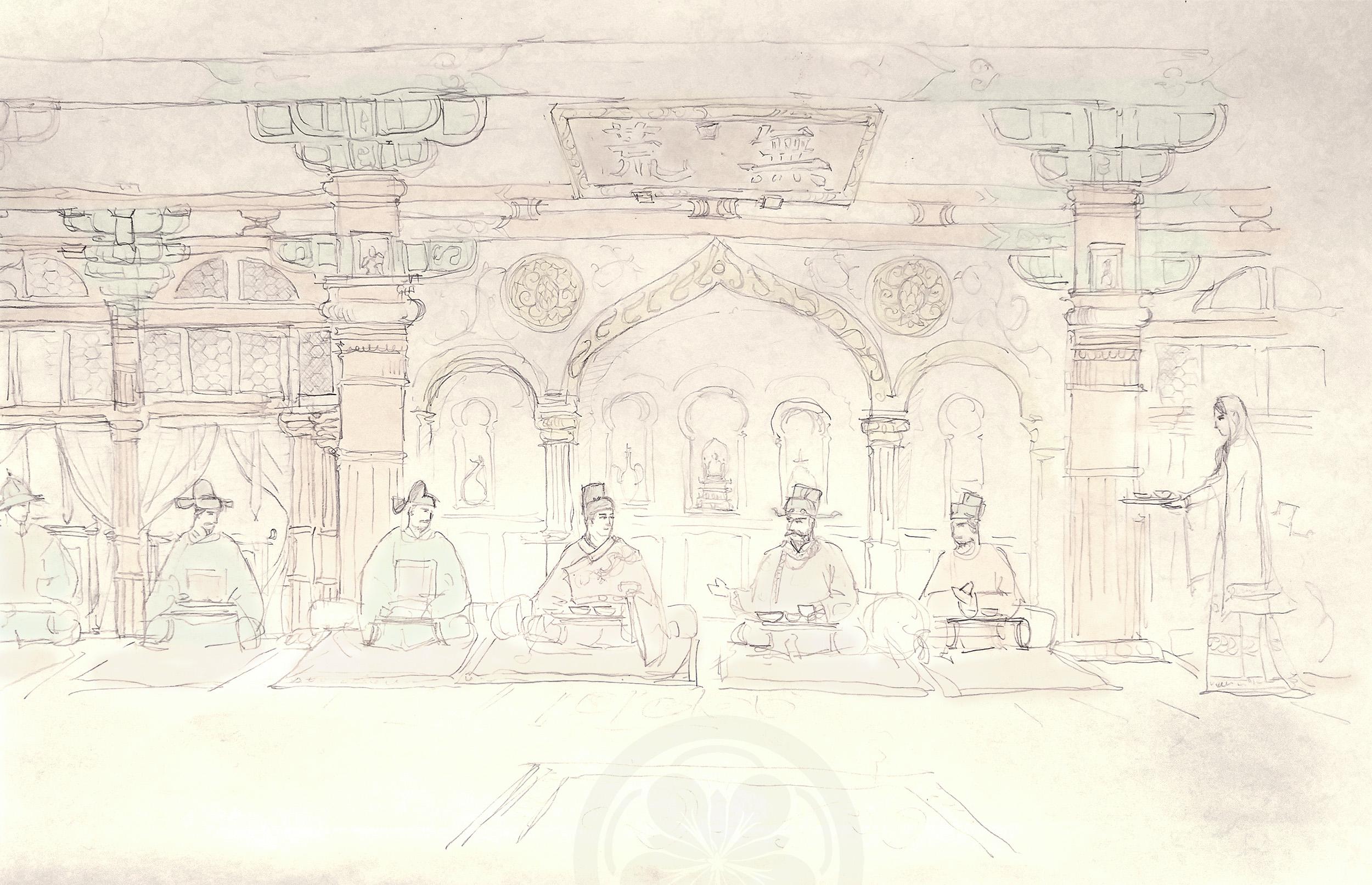
Just love the background, I feel this represents of what the Indian-based Liao Dynasty (or any Sinicized Dynasty in India) would be like.
As for the 12 girls in the last three pics? If you're going to ask me about it, I'd say the last one. Well, they're appealing exotic in the broad sense.
Hey guys,
Halfway through Chapter 12 now, which means I still need ~4 days to get this done (I work on this for ~50 minutes per day). I will post the explanation of the Mahakhitan luncheon menu tomorrow though.
I both love and hate the Grand Theatre series so much... On one hand it's so brilliantly and thoughtfully written. On the other hand they are so freaking long especially compared to the following chapters. The updates will come much more quickly after this one, well at least hopefully so .
.
Halfway through Chapter 12 now, which means I still need ~4 days to get this done (I work on this for ~50 minutes per day). I will post the explanation of the Mahakhitan luncheon menu tomorrow though.
I both love and hate the Grand Theatre series so much... On one hand it's so brilliantly and thoughtfully written. On the other hand they are so freaking long especially compared to the following chapters. The updates will come much more quickly after this one, well at least hopefully so
Additional Update: Menu of the Mahakhitan Imperial Luncheon for Ming Delegates
Additional Update: Menu of the Mahakhitan Imperial Luncheon for Ming Delegates
- Dry Fruits:
- Dates 椰棗
- Walnuts 胡桃
- Pistachios 阿月渾子
- Fresh Fruits:
- Sliced Blood Oranges/Tangerines 瑪瑙橘
- Kinnow Tangerines 金腦橘
- Pomegranate Seeds 安石榴籽
- Apples 頻果
- Tea:
- Fermented "Traditional" Macha with Salt “古法”點茶(發酵茶加鹽)
- Wine:
- Multan Grape Wine 木爾坦蒲桃酒
- Entrées:
- TTL Lentil Rajama 煨小扁豆
- ... (Author cannot recall...) 奶汁燉綠葉菜
- TTL Palak Paneer 菠菜泥配羊乳酪丁
- TTL Roti with Sesame (and extra oil?) 小胡餅
- Main Part One:
- Proto Chicken Masala 燉雞塊
- Fried Kufta with Extra Spicing 炸羊肉丸
- TTL Pilaf using Basmati Rice with Extra Mutton Oil 焗秈米飯加油
- Main Part Two:
- Proto Tikka (with Reference to Chopan Kabob) 烤肉串
- Sliced Naan 大胡餅/饢
- Post-Meal:
- Flour Dough Boiled in Fish Soup 魚湯煮麵片
- Garlic-Marinated Eggplant (Small Round Indian Variant) 醃蒜茄子
- Desserts:
- TTL Proto Lassi 香草牛乳冰
- Fruits with Sugar and Yogurt 水果盤澆酸奶
- After-Meal Tea 餐後茶
Last edited:
Additional Update: Menu of the Mahakhitan Imperial Luncheon for Ming Delegates
Note: The Chinese dish names after the English ones are from the perspective of the Ming delegates - they do not necessarily correspond to what OTL Chinese would call these dishes.
- Dry Fruits:
- Dates 椰棗
- Walnuts 胡桃
- Pistachios 阿月渾子
- Fresh Fruits:
- Sliced Blood Oranges/Tangerines 瑪瑙橘
- Kinnow Tangerines 金腦橘
- Pomegranate Seeds 安石榴籽
- Apples 頻果
- Tea:
- Fermented "Traditional" Macha with Salt “古法”點茶(發酵茶加鹽)
- Wine:
- Multan Grape Wine 木爾坦蒲桃酒
- Entrées:
- TTL Lentil Rajama 煨小扁豆
- ... (Author cannot recall...) 奶汁燉綠葉菜
- TTL Palak Paneer 菠菜泥配羊乳酪丁
- TTL Roti with Sesame (and extra oil?) 小胡餅
- Main Part One:
- Proto Chicken Masala 燉雞塊
- Fried Kufta with Extra Spicing 炸羊肉丸
- TTL Pilaf with Extra Mutton Oil 焗米飯加油
- Main Part Two:
- Proto Tikka (with Reference to Chopan Kabob) 烤肉串
- Sliced Naan 大胡餅/饢
- Post-Meal:
- Flour Dough Boiled in Fish Soup 魚湯煮麵片
- Garlic-Marinated Eggplant (Small Round Indian Variant) 醃蒜茄子
- Desserts:
- TTL Proto Lassi 香草牛乳冰
- Fruits with Sugar and Yogurt 水果盤澆酸奶
- After-Meal Tea 餐後茶
Would we likely see an Indianized Mahakhitan version of Chinese Hot Pot in this ATL?
Would we likely see an Indianized Mahakhitan version of Chinese Hot Pot in this ATL?
In the Chinese wiki entry for Hot Pot it's mentioned that:
So I'd say it most likely already exists, but I don't think Kara has written about it (none of the following 10+ chapters went much into on food).
other thoughts-bit of a North Indian skew, lots of meat and pilafs. The fish soup could be Goan/Tamil, that is common there. Given the prominence of Buddhism, although explained, and the commonness of vegetarianism in much of India, a vegatrian main dish as an option or the vegetarian appetizers make sense. I’m curious about the use of mutton fat instead of ghee, is that a Khitan thing?
Threadmarks
View all 51 threadmarks
Reader mode
Reader mode
Recent threadmarks
Chapter 27 Mahakhitan Kaleidoscope (1): A Brief Introduction to the Empire’s Administrative Branch in 18th Century Chapter 28 Mahakhitan Kaleidoscope (2): Mahakhitan Vexillology, and Brief Introduction to the Country’s Army and Navy Bonus 006: Dimensions of the South Asian Subcontinent, Among Other Things Chapter 29 Stories of Mahakhitan Porcelain Art (Part One) Bonus 008: Preview of the Mahakhitan State mod For Victoria II. Original Historical Material: The Mahakhitan Chronicle (1632-1760) Chapter 30 Stories of Mahakhitan Porcelain Art (Part Two) Chapter 040, An Illustrated Guide to South City Wards.
Share: